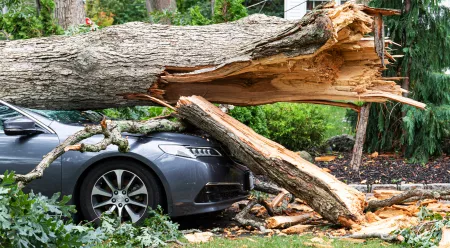We’ve written about car insurance in Ontario several times, but today we’re going into the nitty-gritty of the different types of car insurance in Ontario. We’ve heard that getting insurance can be a stressful time and that it feels complex. We’re here today to let you know that it’s not as complex as you might think.
We’re going to explain the different types of insurance in Ontario, and the specifics of each. Then we’ll talk a bit about what they mean to you in case of an accident. Finally, we’ll give you some basic rules about how to choose the type of insurance that’s right for you. Check also this post about car insurance rules when moving to another province.
If you’re looking to understand the different types of car insurance in Ontario, you’ve come to the right place. Continue reading and when you finish this article, you’ll be ready to do whatever you need to with the knowledge of the types of vehicle insurance. We also outlined different types of insurance Surex provides.
Types of Car Insurance in Ontario
Direct Compensation Property Damage
Direct compensation is one of the main, mandatory components of all automotive insurance in Ontario. This type of coverage covers the damage to your vehicle in case of an accident where you are not at fault. This coverage also covers the contents of your vehicle.
Direct compensation exists as a result of the no-fault insurance system Ontario has. To sum up, the no-fault system means that no matter who causes an accident, each driver works with their insurer. Before the no-fault system, you would have to wait until the respective insurance companies for each driver involved in an accident to decide who was at fault, and which company should pay for the damage. This would lead to delays as you waited to see who was responsible.
Remember that even though we no longer use the at-fault system overall in Ontario automotive insurance, your rates could still change if you’re found at-fault.
Today, the direct compensation system means that you won’t be waiting for the other driver’s insurer, nor will you have to sue the other driver.
The important factor to know about direct compensation is that there are certain conditions that must be met in order to receive compensation through this type of coverage. Firstly, you need to be found not at-fault for the accident. Secondly, there needs to be more than 1 vehicle involved in the accident. Finally, the accident needs to have happened in Ontario, and all drivers involved need to be insured by insurance companies that operate in Ontario.
Your insurance company will help you figure out if this type of coverage is applicable for your accident.
START A QUOTE
Liability Coverage
Liability insurance is the second type of automotive insurance we’re going to discuss today. It’s another mandatory type of coverage for Ontario drivers, and probably the most well-understood of the types of coverage. Liability insurance mostly applies when you’re at-fault for an accident.
Liability coverage refers to two subcategories of insurance coverage: bodily injury, and property damage. The bodily injury portion of your liability coverage will cover injured parties in case of an accident. The coverage may pay for medical treatment or other expenses, or lost wages due to recovering from any injuries sustained during an automotive accident.
The property damage portion of your coverage pays for the damage to the other party’s personal property in case of an accident. It may go towards their vehicle, the contents, any buildings damaged in an accident, and more.
It is important to restate that liability insurance only covers the damage to other parties. It does nothing to cover your own vehicle or other property, nor does it cover your injuries.
Many insurers carry liability-only policies. To better understand if these types of policies are a good fit for you, reach out to a Surex advisor and explain your needs.
Uninsured Automobile Coverage
The third type of car insurance coverage in Ontario fairly self-explanatory. Uninsured automobile coverage exists to cover you if you’re involved in an accident with a driver who is uninsured. This type of insurance also covers hit-and-run type accidents, where one driver doesn’t remain on the scene of the accident or fails to provide the necessary information.
This type of insurance is very important for Ontario drivers, as the no-fault system framework becomes complex if one of the drivers is simply uninsured. Hopefully, you’re never involved in a traffic accident. If you are, you would want the other driver at least to be insured. If they’re not, the mandatory uninsured coverage comes into effect.
Accident Benefits
The final type of mandatory coverage that we’re going to cover today is the Statutory Accident Benefits Schedule (SABS). This type of coverage is what covers you in case of an injury during an automotive accident. This type of coverage applies to drivers, passengers in the involved vehicles, bystanders and pedestrians as well. Attendant care is the type of care you would require if you’re unable to care for yourself with help. Accident benefit covers this and a few other categories of coverage.
Your medical and rehabilitation expenses are covered by your accident benefits. This applies to expenses that aren’t covered by government health plans. A caregiver benefit is a benefit that applies if you’re a primary caregiver in your household. It exists to cover the costs of hiring someone to help care for any children or other types of dependants.
The income replacement benefit is for any wages that you lose if you’re unable to work due to an accident. The death and funeral benefit is unpleasant to think about, but important to understand. If you were to pass away, the death benefit is a one-time lump-sum payment that is paid to your spouse or dependants. Similarly, the funeral benefit helps to cover any costs associated with your funeral if you die as a result of an auto accident.
There are other types of coverage in the accident benefits portion of your automobile insurance as well. You should ask your insurer for the specifics of your plan.
We hope that you now understand a bit more about the types of vehicle insurance in Ontario. Ontario’s mandatory insurance components can be daunting when you’re first learning about them, but you should now have a basic understanding of all the types of vehicle insurance in Ontario. Check also this post to learn more about insurance for classic cars.



